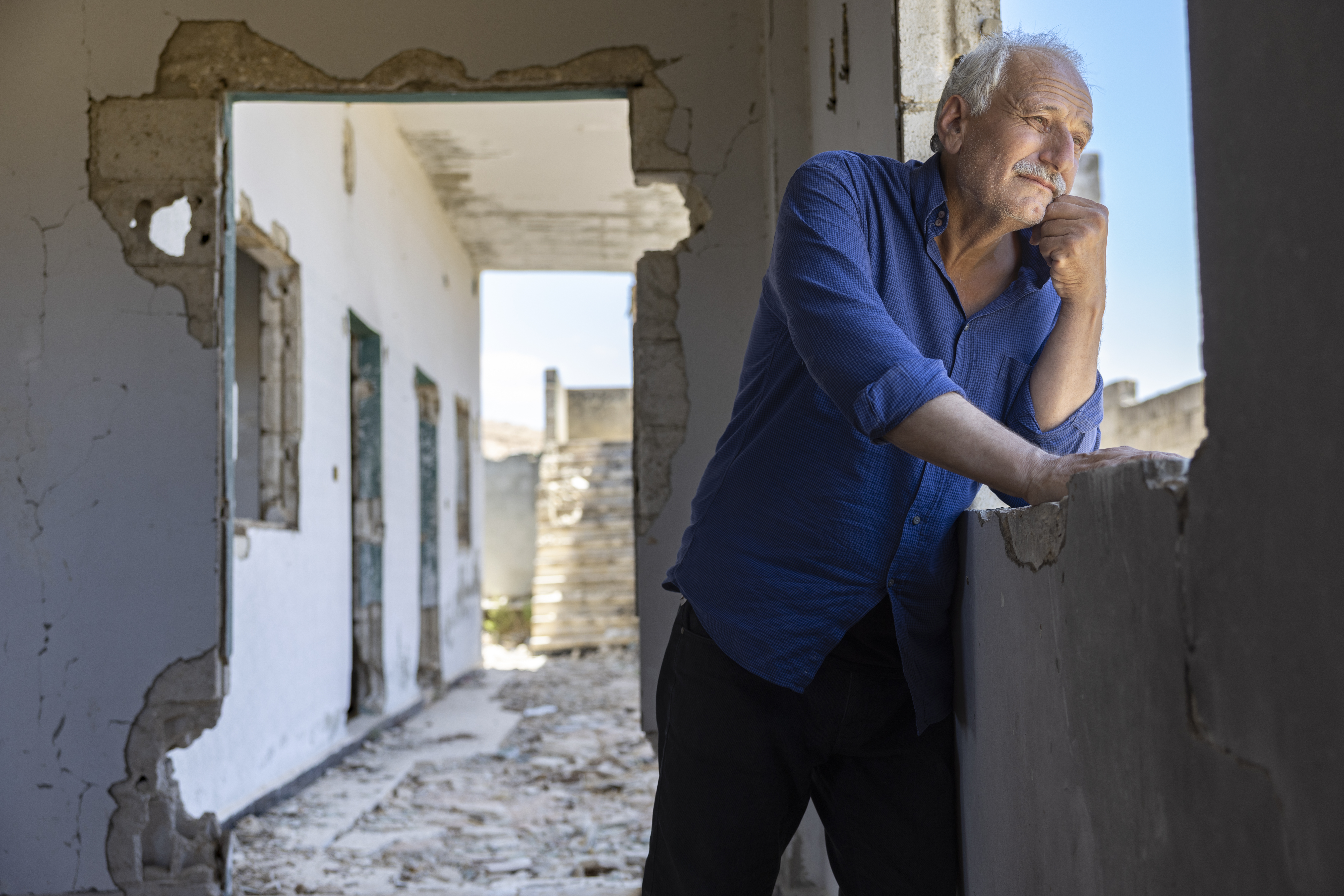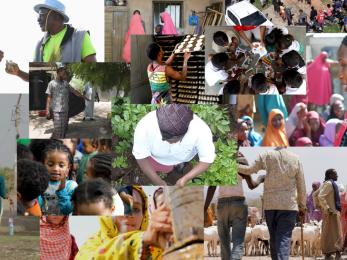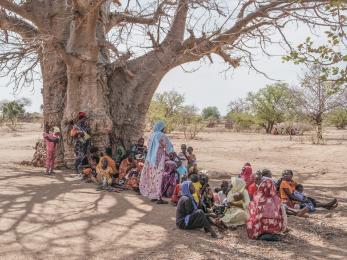5 years after quake: Journey from relief to recovery
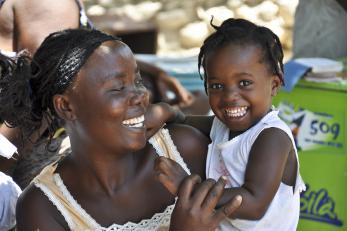
The earthquake
On January 12, 2010, a 7.0 magnitude earthquake hit Haiti with a vengeance. The epicentre was just 16 miles west of Port-au-Prince, the island nation’s bustling capital. Estimates of the death toll vary, but between 220,000 and 316,000 people were killed by the disaster, and 300,000 more people were injured.
The entire region, lacking the infrastructure needed to withstand the powerful quake, was devastated. After the disaster, 1.5 million people were displaced in tent camps throughout the areas that were affected by the earthquake. They needed food, water and other essentials to survive.
In the aftermath of the disaster, we knew how important it was to look forward. While we worked to meet urgent needs, we also quickly began developing programmes to move Haiti from emergency recovery to long-term rebuilding.
Those programmes have helped Haitians cope with the disaster, rebuild local roads, keep their families healthy, take better care of the land, and start or expand small businesses.
Five years later, we continue to support the people, families and communities that were affected in the effort to rebuild a stronger and more resilient Haiti.
Immediate relief
Within two days after the earthquake hit, we were on the ground and ready to help. Mercy Corps deployed an emergency response team of 35 experts directly to Port-au-Prince after receiving news of the disaster. We knew it was important to address the immediate needs of survivors, including food, water and post-trauma recovery.
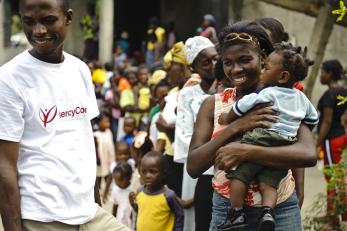
We delivered emergency food, clean water, shelter materials and recovery assistance to 1 million people.
To fill the need for clean drinking water, we supplied 9.5 million litres through water vouchers, purification tabs and high-capacity water filtration units. We also distributed more than 100,000 hygiene kits, which included essential everyday items to keep displaced families healthy.
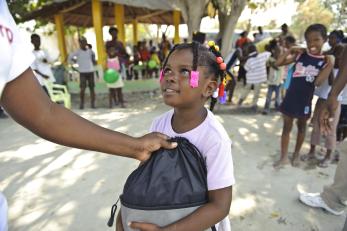
During disasters, we know that children are often the most traumatised. To help them express their feelings, we quickly began our “Comfort for Kids” program, which uses interactive workbooks to help each child tell their story in a safe environment.
We also trained community members to help the children cope with what they experienced during the earthquake.
Working with communities to begin recovery
As we responded to immediate needs in the aftermath of the disaster, we also began larger efforts to support families and communities for the long term. After the earthquake, we provided temporary jobs to more than 28,000 people who worked to clean up and begin rebuilding their communities.
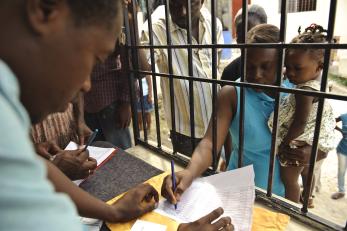
By providing the equipment needed and paying local workers a daily wage, we helped clear the rubble and gave survivors the income they needed to put food on the table, regain a sense of dignity and support local businesses.
Mercy Corps also started a cash transfer programme that allowed people to purchase what they needed most from local markets and shops. This work reached more than 180,000 people in total, and gave Haitians some income to help jump-start the local economy.
This approach is crucial in the days, weeks and months immediately following a disaster like the Haiti earthquake. In order for recovery to begin, people must be able to move around freely and purchase the goods they need most.
With so many people’s homes destroyed by the disaster, we also supported 30,000 families in rural areas less affected by the earthquake, who hosted displaced survivors in their homes.
Thinking of the big picture
In the five years since the disaster, we have shifted our focus from immediate relief to long-term economic development. Haiti’s economy faced steep challenges even before the earthquake hit. At the time of the disaster, more than 55 per cent of the population lived on less than $1 a day.
Poor infrastructure, urban overcrowding, environmental degradation and widespread poverty all contributed to the unique struggles that Haiti needed, and still needs, to overcome. Families had to bounce back, but the community also needed to move beyond where it started.
Today, five years after the devastating earthquake, progress has been made on the path to recovery and rebuilding, but significant challenges remain.
To directly address those obstacles and keep Haiti moving forward towards creating a stronger, more resilient and connected economy, we started several programmes that focus on helping people build more successful small businesses.
See photos: Building back stronger ▸
Helping urban businesses thrive
In already overcrowded and ever more rapidly urbanising cities, providing economic opportunities to aspiring entrepreneurs, particularly women and youth, is absolutely key. Doing so in marginalised and vulnerable neighbourhoods is even more important.
Because of this reality, Mercy Corps in Haiti is focused on creating better economic opportunities in marginalised urban neighbourhoods by boosting entrepreneurs, building skills in youth, and improving access to saving and credit to help people expand their businesses.

The economy in Haiti is largely informal, so very few people work in large businesses or receive a monthly salary. But everyone must make a living, so most people work in the small shops and stands that line the streets of Port au Prince.
Unfortunately, these jobs provide only a small amount of income, so things like unexpected bills can quickly derail an entire business and livelihood.
We foster the creation of local savings and loan associations so that participants, most of them women, can access credit to develop their small businesses. This also helps them insure the business against hazards of life, such as a child requiring health care.
In less than nine months, a thousand members of the associations have saved close to $24,000, which is continuously being re-invested in small businesses.
We have also provided funding and mentorships for many businesses in the most densely-populated areas of Haiti, including the capital. It’s important to help businesses go from micro, to small, to eventually medium-sized businesses to promote overall growth.
When more local businesses can reach those goals, those areas and neighbourhoods will have better services that help the entire community.
Read: One woman's story of growing her business ▸
The next generation
Youth are a huge demographic in Haiti, and more and more young people are entering the economy every year. We know that if we give them the right opportunities and the training they desire, they can become successful members of the economy and contribute to the country’s recovery.
We work together with youth to help them discover on their own what the employment opportunities are around them. Then they can choose the right training to fulfill their aspiration, and we are able to help them access training and internships to build their skills.
We gather groups of tremendously motivated youth from marginalised neighbourhoods in intensive 3-day sessions on business development planning. The young people with the strongest ideas receive guidance and funding so they can establish their business.
Healthy land, healthy business
On an overpopulated and mountainous tropical island subject to annual tropical storms and hurricanes, environmental degradation can have far-reaching consequences — not only on the land but on people’s livelihoods, assets, health and physical security.
Deforestation has caused significant soil erosion and degraded watersheds in Haiti’s rural areas, making them more vulnerable to harsh weather and natural disasters.
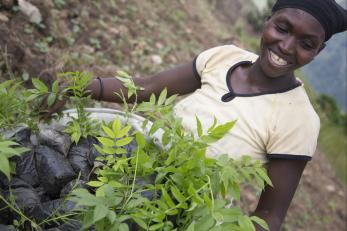
We work with farmers and their associations to preserve and rebuild soil, introduce and improve agroforestry practices, and support the development of agri-businesses. Together, this work will boost the incomes of rural farmers and mitigate the economic and environmental effects of future disasters.
With our partners, we help farmers plant fruit and fuel-wood trees, and introduce higher-value crops such as plantain, manioc, yams, and sugar cane — creating diversified gardens that will stop and reverse soil erosion, provide greater income and year-round food, and foster improved practices of animal husbandry.
More than 1,400 farmers have improved their gardens and have the prospect of huge income growth; and more will be able to benefit in the future thanks to a credit-based, scalable and sustainable model developed and refined over the last three years.
Read story: Farmer's digging deep to repair the land ▸
More work to be done
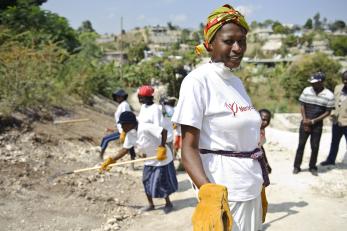
A lot has been said about the earthquake response and the pace of the recovery and reconstruction effort. There is more work to be done, but this is not a surprise.
Consider the Kobe earthquake of 1995 in Japan, which was very similar in scope and level of destruction: 7.3 in magnitude, 200,000 buildings destroyed, and some 300,000 people left homeless. It took more than three years to clear all rubble and seven years before all infrastructure was rebuilt.
Even after 10 years, some economic sectors had not yet fully recovered — and this in the second-richest and most developed country at the time.
In comparison, the national government budget in Haiti is, at approximately $2.5 billion per year (including donor funds), 30 per cent less than the annual budget of a mid-sized American city like Portland, where Mercy Corps is headquartered.
Looking at this comparison helps bring the reality into perspective. Yes, there remains work to be done. Mercy Corps remains firmly dedicated to bringing economic development opportunities to the people, families and communities we work with, and helping the Haitian people achieve their long-term goal of sustainable and peaceful development.
Connecting the puzzle pieces
While the recovery efforts are far from over, we are happy with how far Haiti has come in the last five years. We are confident that the work we are doing right now in both the country’s urban areas and mountainous regions will contribute greatly to future economic success.
Right now, people in Haiti still face significant daily challenges. But in order to eventually provide quality social services, like healthcare and financial institutions, the country needs a fully-functional economy.
That’s why our focus is on economic development, and why it is so key that we help people grow their businesses, youth gain education and training, and farmers care for their land.
Our long-term vision for Haiti is that eventually, the successful young entrepreneurs that we help in Port-au-Prince and other urban areas will be connected to the rural farmers in the mountains. They will link together and support each other, creating a strong, connected and resilient economy with women, men and youth all involved.
It won’t happen overnight, but the work we are doing now will help the people of Haiti move forward towards their long-term goals for their country.
